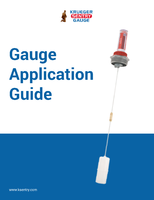Processor makes medical waste environmentally friendly.
Share:
Press Release Summary:
External Steam Agitation system uses steam properties to process medical waste to allowable sterile level that can be distributed to landfill. Jacketed pressure vessel with internal rotating arm macerates waste contents and facilitates heat dissipation. Additional drying cycles dehydrate waste contents, leaving processed waste as unrecognizable, biologically inert solid waste residue. Control system permits secure parameter changes, print outs, and scheduling.
Original Press Release:
New Technology Sets Standard for Medical Waste Treatment
Bioservices Group Inc. in North Bay, Ontario Canada has developed cutting-edge technology for making the process of medical waste easier and more environmentally friendly. External Steam Agitation (ESA(TM)) uses simple steam properties to process medical waste to an allowable sterile level that is distributed to landfill. The bottom line to this technology is dollars and sense.
ESA(TM) is designed with an internal rotating arm that macerates the waste contents. The waste is broken up which allows for enhanced heat dissipation as compared to standard autoclaves. Additional drying cycles dehydrate the waste contents leaving the processed waste as an unrecognizable, biological inert solid waste residue.
Using a jacketed pressure vessel with an internal arm assembly reduces steam consumption. No longer is it required to produce steam for an entire chamber, only the jacket requires steam in most cases. Medical waste has a liquid content on it's own and ESA(TM) uses that benefit to create an internal pressure. In a case where there is a dry waste content, steam is only added when the internal vessel is heated to an almost boiling point- this reduces the condensing of steam.
The ESA(TM) is designed with the most advanced control system in the industry to date. Multiple, pass-coded parameter changes, text print outs, programmed maintenance schedule, operator programmed biological indicator testing schedule, load weight print out and operator programmed drying and additional drying cycles are just a few of the systems advances that make the ESA(TM) raise the bar on the regulatory standards for treatment of medical waste.
In the Ontario Ministry of the Environment Regulations, Environmental Protection Act, Part V, GUIDELINE C-17 the ESA(TM) technology has the highest rating in the guidelines for sterility assurance. Section 8 Definitions states: "The additional conditions for ESA is that the waste is mixed and broken down (not necessarily shredded) by internal mixing arms. As a general rule, the destruction of pathogens is more efficient under these conditions, because of easier and better steam penetration in the waste."
Bioservices Group Inc. recently finalized the installation of a Pro 200 Series in the newest hospital in Ontario, Canada, Thunder Bay Regional Health Sciences Centre (TBRHSC). The hospital saves up to $60,000.00 per year on transportation and treatment costs. Earlier evaluations thought the Pro 200 Series would require 6-7 loads per day. However, the on-site treatment allowed the waste management team to assess their biomedical waste and is now required to do 2-3 loads per day due to better segregation protocols.
"From my point of view, we know the waste is handled properly, plus we can keep the money in this facility, in the region," a representative from the TBRHSC said. The system has a lifespan of 13-16 years and will be paid for within a three-year period. Further discussions with Bioservices Group Inc. is to assist the hospital in acquiring a permit from the Ontario Ministry of the Environment to treat off site medical waste that will increase hospital revenue.
Each system is manufactured under ASME pressure vessel requirements and is approved under Canadian Standards Association (CSA) International.




